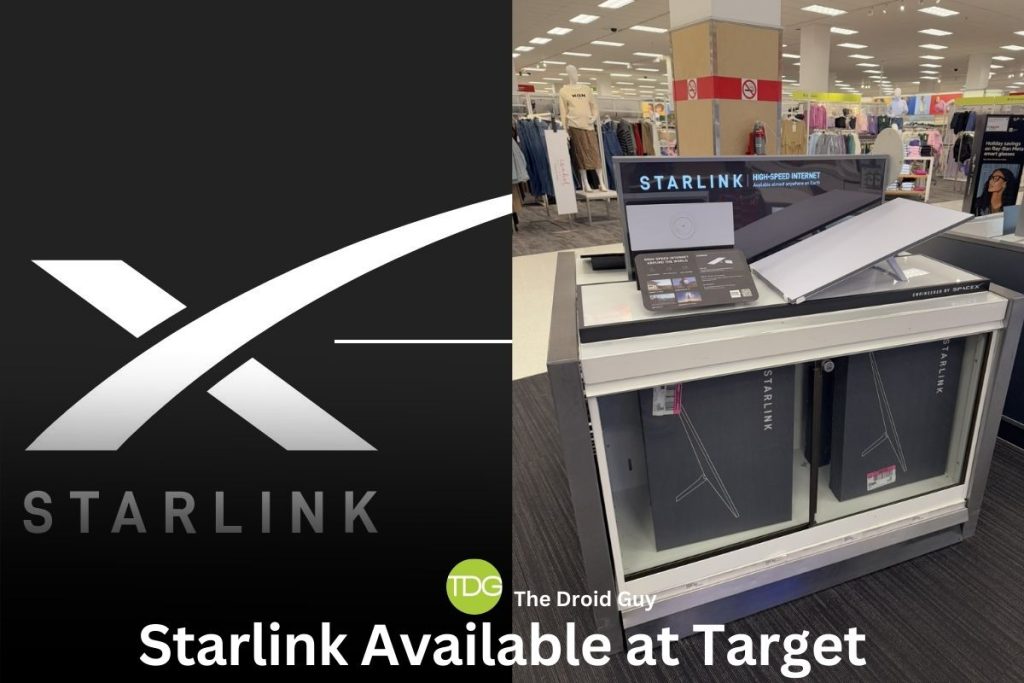Starlink Now Available at Target: A Game-Changer for Rural Internet Access
In a groundbreaking move that exemplifies the rapid expansion of technology into everyday retail, Starlink, SpaceX’s ambitious satellite internet service, is now available for purchase at Target stores across the United States. This development marks a significant milestone in making high-speed internet more accessible, particularly in rural and underserved areas.

Starlink at Target: What You Need to Know
Product Details:
- Starlink Mesh Standard Kit: This kit includes everything needed to get online: a Starlink dish, Wi-Fi router, cables, and base. It’s designed to be user-friendly with an easy self-installation process, requiring no contracts, allowing for cancellation at any time.
- Availability: As of the announcement, Starlink kits could be found alongside everyday items like discount jeans at Target, making high-tech internet solutions as accessible as consumer goods.
Pricing and Plans:
- The kit itself comes with a one-time hardware fee, which varies by plan but can range from approximately $599 for residential use to $2,500 for business applications. Monthly service plans are required, with options for fixed location (Residential) or mobile use (Roam), the latter allowing service anywhere Starlink has coverage.
Features and Benefits:
- High-Speed Internet: Starlink promises speeds from 50 to 200 Mbps, which is a significant upgrade for rural areas where traditional broadband options are often limited or non-existent.
- Low Latency: With latency between 20 to 40 ms, activities like streaming, online gaming, and video conferencing, which were previously challenging on satellite internet, are now feasible.
- Weather Resistant: Designed to withstand various weather conditions, Starlink’s equipment is engineered to provide reliable service in snow, rain, heat, or cold.
The Celebration and Community Response
The availability of Starlink at Target has sparked a wave of excitement and celebration among various communities:
- Rural Enthusiasts: For rural residents like Jim Olson from Colorado, who shared his experience of going from 20 Mbps to 150 Mbps with Starlink, this is a game-changer. The community appreciates the ease of access and the significant improvement in internet quality, which was previously a barrier to modern digital life.
- Tech Aficionados: Tech enthusiasts are celebrating the democratization of high-speed internet. The presence of Starlink kits next to everyday items symbolizes how technology is becoming more integrated into our daily lives, reducing the digital divide.
- Elon Musk Supporters: Fans of Elon Musk and SpaceX see this as another successful venture by Musk, furthering his vision of global connectivity. Social media platforms are filled with posts celebrating this step towards making internet access universal.
A Critical Look at the Biden Administration’s Broadband Efforts
While the availability of Starlink at Target is a cause for celebration, it also brings into question the effectiveness of government initiatives like those under the Biden administration:
Government Investment vs. Private Innovation:
- The BEAD Program: The Biden administration has committed $42.45 billion for rural broadband expansion through the Broadband Equity Access and Deployment (BEAD) program. However, despite this substantial investment, not a single rural home has been connected to broadband via this initiative, which raises concerns about efficiency and execution.
Criticism Points:
- Inefficiency: Critics argue that the government’s slow pace in deploying funds and infrastructure compared to the rapid rollout by private companies like SpaceX highlights a fundamental inefficiency. The question arises: why hasn’t this vast sum led to tangible results?
- Cost vs. Outcome: With private solutions like Starlink becoming available in mainstream retail, the cost-effectiveness of government programs is under scrutiny. Starlink’s model shows that with innovative technology, private enterprises can sometimes outpace government efforts in providing solutions.
- Accountability: There’s a call for greater transparency and accountability in how these funds are being used. The presence of Starlink kits in stores next to common consumer goods underscores the rapid response capability of the private sector, contrasting with the government’s slower bureaucratic processes.
Public Sentiment:
- Some individuals have expressed skepticism about the government’s intentions, suggesting that the funds might have been used more for shaping online narratives rather than direct infrastructure development. Others see this as proof of government inefficiency compared to market-driven solutions.
Starlink at Target
The introduction of Starlink at Target represents not just a technological advancement but a cultural shift towards making high-speed internet as ubiquitous as any other retail product. While this move is celebrated for its immediate impact on rural connectivity, it also serves as a critique of government-led initiatives in broadband expansion. The Biden administration’s efforts, while well-intentioned, must be examined for their effectiveness in light of private sector innovations like Starlink, which are rapidly closing the digital divide without the same level of public funding.
As we move forward, the conversation must continue on how best to utilize public funds to complement, rather than compete with, private sector solutions. The success of Starlink at Target could serve as a model for future partnerships where government initiatives might focus on regulatory support, subsidies for those unable to afford private solutions, or funding for areas where private companies might not find it profitable to operate. The goal should be a synergistic approach that leverages the strengths of both sectors to ensure that high-speed internet becomes a reality for all, not just a select few.
In this evolving landscape, the public’s role is crucial. Celebrating private sector achievements like Starlink at Target should not overshadow the need for accountability and efficiency in government programs. Instead, it should inspire a dialogue on how we can achieve the best outcomes for rural broadband expansion, ensuring that no community is left behind in our increasingly digital world.